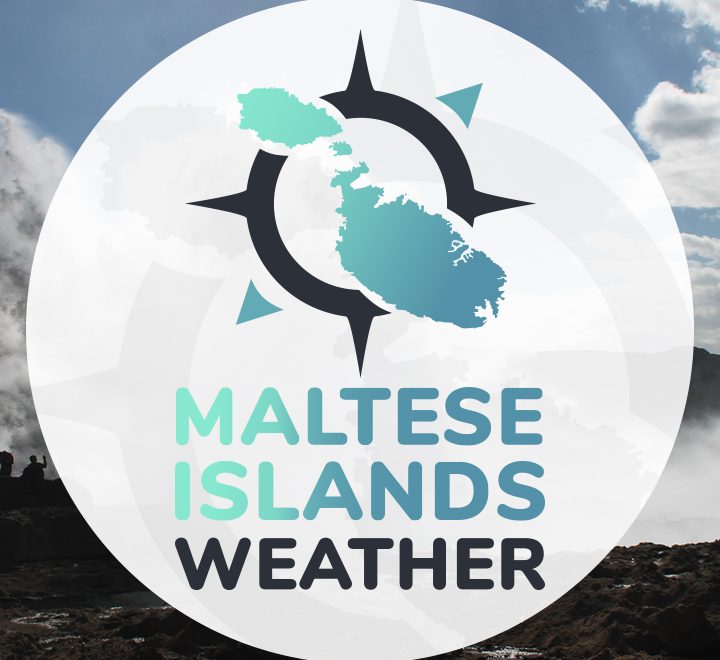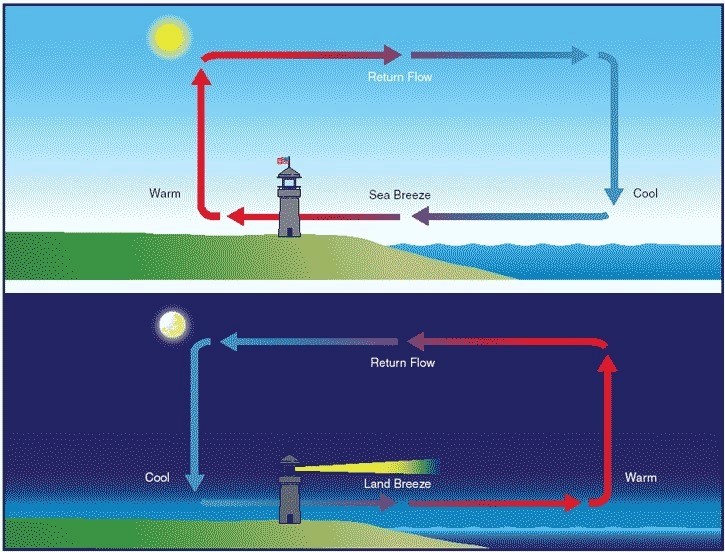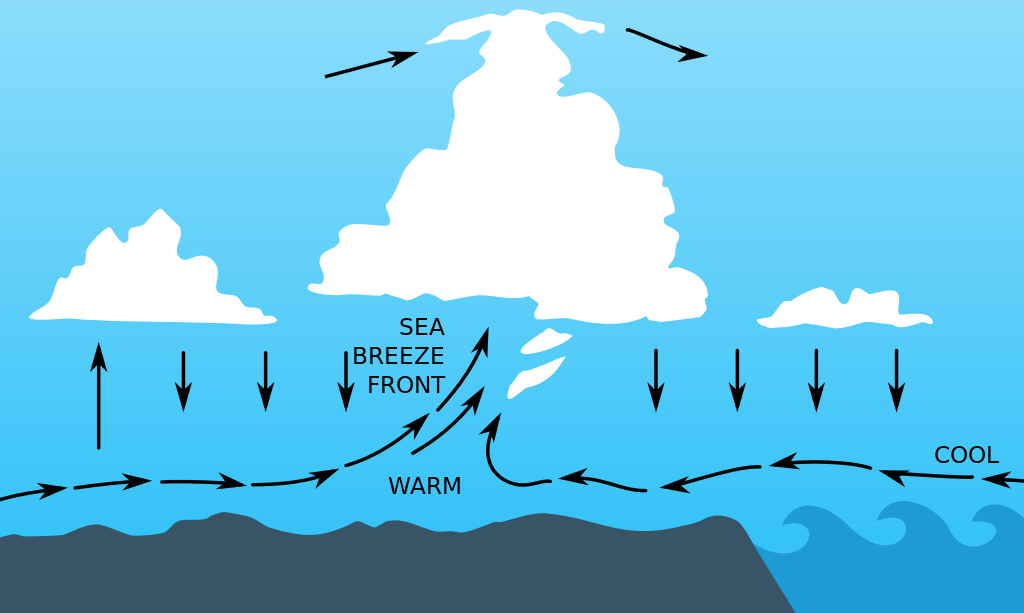
LAND AND SEA BREEZES
Have you ever noticed how during the day in summer, a fresh breeze blows over a beach and then at nights it stops?
Land warms faster during the day than water and it also cools faster at night creating a daily cycle of difference in air pressure that drives the development of local winds called land and sea breezes. They develop anywhere there is land adjacent to a large body of water, even beside a lake. During the day, the breeze blows from the cooler water onto the land. The reverse occurs at night.
Land and sea breezes form when coastal land heats up more quickly than the adjacent water (most effective on a sunny day with a light or no wind at all). Land has a lower heat capacity than water, so the same amount of solar energy causes different surface temperatures over land and sea. This accounts for the variation in temperature between coastal areas and inland areas in the Maltese Islands. This variation is small as sea breezes may affect areas up to 7 km inland and given that our islands are 14 km at their widest, very few areas remain unaffected by this at-casinos.com/.
Day Breeze (top image)
A closed circulation forms as cooled air from over the water rushes to the shore to replace rising warm air, which then descends back toward the sea.
Night Breeze (bottom image)
Overnight, land cools quickly, but sea-surface temperatures remain much unchanged. Cooler air drains toward the sea.

EFFECTS OF LAND AND SEA BREEZES
A sea-breeze front is a front created by a sea breeze. The cold air from the sea meets the warmer air from the land and creates a boundary like a cold front. When powerful this front may lead to the formation of cumulus clouds, and if the air is humid and unstable enough, the front can sometimes trigger thunderstorms. If the flow aloft is aligned with the direction of the sea breeze, places experiencing the sea breeze frontal passage will have benign, or fair, weather for the remainder of the day. At the front warm air continues to flow upward and cold air continually moves in to replace it and so the front moves progressively inland. Its speed depends on whether it is assisted or hampered by the prevailing wind, and the strength of the thermal contrast between land and sea.

MOUNTAIN AND VALLEY BREEZES
A mountain and valley breeze form through a process similar to land and sea breezes. During the day, the sun heats up mountain air rapidly while valleys remain relatively cooler. Convection causes it to rise, causing a valley breeze. At night, the process is reversed. During the night the slopes get cooled and the dense air descends into the valley as the mountain breeze. Like land and sea breezes, these breezes occur mostly during calm and clear weather. Mountain and valley breezes are other examples of local winds caused by an area’s geography. Campers in mountainous areas may feel a warm afternoon quickly change into a cold night soon after the sun sets.



0 comments
Write a comment